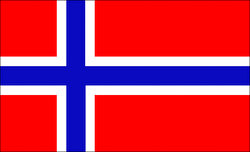A multicentre randomised controlled study has concluded that acupuncture in addition to standard care, is associated with significant improvements in menopausal hot flushes and other menopause-related symptoms.
A total of 175 women were randomised to receive either twelve acupuncture treatments over four weeks in addition to usual care, or to usual care alone. In the acupuncture group, the average reduction in the 24 hour hot flush score was 17, compared to only 7 in the control group. The acupuncture group also showed significant improvements in other areas such as psychological and urogenital, compared to the control group.
(Effects of Acupuncture on Hot Flashes in Perimenopausal and Postmenopausal Women – A Multicentre Randomised Clinical Trial. Menopause, March 2010.)

 Norwegian researchers studying acupuncture for menopausal hot flushes, have concluded it can help reduce their frequency and severity. In a multicentre, randomised, controlled trial involving 267 women, the effects of acupuncture plus self-care, were compared with the effects of self-care alone. The acupuncture group were given ten treatments.
Norwegian researchers studying acupuncture for menopausal hot flushes, have concluded it can help reduce their frequency and severity. In a multicentre, randomised, controlled trial involving 267 women, the effects of acupuncture plus self-care, were compared with the effects of self-care alone. The acupuncture group were given ten treatments. A study by researchers in Brazil, suggests that acupuncture can help in the rehabilitation of women following breast cancer surgery. Twenty-nine patients with lymphoedema and/or restricted range of arm movement following surgery, were given 24 weekly acupuncture treatments. At the end of the trial, significant improvements were noted in range of movement, lymphoedema, and sense of heaviness and tightening of the affected arm.
A study by researchers in Brazil, suggests that acupuncture can help in the rehabilitation of women following breast cancer surgery. Twenty-nine patients with lymphoedema and/or restricted range of arm movement following surgery, were given 24 weekly acupuncture treatments. At the end of the trial, significant improvements were noted in range of movement, lymphoedema, and sense of heaviness and tightening of the affected arm.